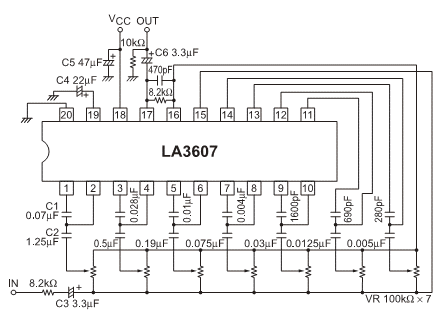-Packaging:Embalaje
-Plastics:Plásticos
-Molecules:Moléculas
-Natural plastics:Plásticos naturales
-Obtained:Adquirido
-Sources:Fuentes
-Synthetic plastics:Plásticos sintéticos
-Compounds:Compuestos
-Polymerisation:Polimerización
-Fillers:Rellenos
-Enhance:Mejorar
-Additives:Adicionales
-Rigid:Rígido
-Resistant:Resistente
-Insulators:Aislantes
-Ductile:Dúctil
-Malleable:Maleable
-Light:Ligero
-Impermeable:Impermeable
-Recyclable:Reciclable
-Chemical recycling:Reciclaje químico
-Mechanical recycling:Reciclaje mecánico
-Energy recovery:Recuperación de energía
-Non-biodegradable plastic:Plástico no biodegradable
-Biodegradable plastic:Plástico biodegradable
-Thermoplastics:Termoplásticos
-Soften:Ablandar
-Thermosetting plastics:Plásticos termoestables
-Elastomers:Elastómeros
-Polyethylene terephthalate:Tereftalato de polietileno-Plastics:Plásticos
-Molecules:Moléculas
-Natural plastics:Plásticos naturales
-Obtained:Adquirido
-Sources:Fuentes
-Synthetic plastics:Plásticos sintéticos
-Compounds:Compuestos
-Polymerisation:Polimerización
-Fillers:Rellenos
-Enhance:Mejorar
-Additives:Adicionales
-Rigid:Rígido
-Resistant:Resistente
-Insulators:Aislantes
-Ductile:Dúctil
-Malleable:Maleable
-Light:Ligero
-Impermeable:Impermeable
-Recyclable:Reciclable
-Chemical recycling:Reciclaje químico
-Mechanical recycling:Reciclaje mecánico
-Energy recovery:Recuperación de energía
-Non-biodegradable plastic:Plástico no biodegradable
-Biodegradable plastic:Plástico biodegradable
-Thermoplastics:Termoplásticos
-Soften:Ablandar
-Thermosetting plastics:Plásticos termoestables
-Elastomers:Elastómeros
-High-density polyethylene:Polietileno de alta densidad
-Polyvinyl chloride:Cloruro de polivinilo
-Low-density polyethylene:Polietileno de baja densidad
-Polypropylene:Polipropileno
-Polystyrene:Poliestireno
-Moulded:Moldeado
-Expanded:Expandido
-Methacrylate:Metacrilato
-Teflon:Teflón
-Cellophane:Celofán
-Nylon:Nylon
-Polyurethane:Poliuretano-Low-density polyethylene:Polietileno de baja densidad
-Polypropylene:Polipropileno
-Polystyrene:Poliestireno
-Moulded:Moldeado
-Expanded:Expandido
-Methacrylate:Metacrilato
-Teflon:Teflón
-Cellophane:Celofán
-Nylon:Nylon
-Bakelite:Baquelita
-Melamine:Melamina
-Polyester resins:Resinas de poliéster
-Natural rubber:Caucho natural
-Synthetic rubber:Caucho sintético
-Neoprene:Neopreno
-Extrusion:Extrusión
-Calendering:Calandrado
-Vacuum forming:Formación de vacío
-Moulding:Moldura
-Thermoplastic:Termoplástico
-Neoprene:Neopreno
-Extrusion:Extrusión
-Calendering:Calandrado
-Vacuum forming:Formación de vacío
-Moulding:Moldura
-Thermoplastic:Termoplástico
-Moulds:Moldes
-Thermosetting:Termoestable
-Measuring:Medición
-Marking:Calificación
-Cutting:Corte
-Drilling:Perforación
-Filing and sanding:File y lijado
-Joining:Unión
-Carpenter's square:Escuadra del carpintero
-Ruler:Regla
-Measuring tape:Cinta métrica
-Protractor:Transportador
-Scissors:Tijeras
-Utility knife:Cuchillo de uso
-Hacksaw:Sierra
-Jigsaw:Rompecabezas
-Punch:Perforadora
-Hot wire cutter:Cortador de cables
-Drill:Taladro
-Bit:Barra de metal
-Tap and handle:Manija
-File:Lija
-Sandpaper:Papel de lija
-Belt sander:Lijadora de banda
-Orbital sander:Lijadora orbital
-Bolts, nuts and washers:Tornillos, tuercas y arandelas
-Threaded:Enhebrado
-Thermosetting:Termoestable
-Measuring:Medición
-Marking:Calificación
-Cutting:Corte
-Drilling:Perforación
-Filing and sanding:File y lijado
-Joining:Unión
-Carpenter's square:Escuadra del carpintero
-Ruler:Regla
-Measuring tape:Cinta métrica
-Protractor:Transportador
-Scissors:Tijeras
-Utility knife:Cuchillo de uso
-Hacksaw:Sierra
-Jigsaw:Rompecabezas
-Punch:Perforadora
-Hot wire cutter:Cortador de cables
-Drill:Taladro
-Bit:Barra de metal
-Tap and handle:Manija
-File:Lija
-Sandpaper:Papel de lija
-Belt sander:Lijadora de banda
-Orbital sander:Lijadora orbital
-Bolts, nuts and washers:Tornillos, tuercas y arandelas
-Threaded:Enhebrado
-Adhesives:Adhesivos
-Two-part resins:Resinas de dos partes
-Acrylic cement:Cemento acrílico
-Contact adhesives:Adhesivos de contacto
-Soldering:Soldadura
-Heat sealer:Sellador de calor
-Hot air welder:Soldador de aire caliente
-Natural:Natural
-Synthetic:Sintético
-Wool:Lana
-Silk:Seda
-Cotton:Algodón
-Esparto:Esparto
-Linen:Lino
-Bamboo:Bambú
-Metallic fibres:Fibras metálicas
-Two-part resins:Resinas de dos partes
-Acrylic cement:Cemento acrílico
-Contact adhesives:Adhesivos de contacto
-Soldering:Soldadura
-Heat sealer:Sellador de calor
-Hot air welder:Soldador de aire caliente
-Natural:Natural
-Synthetic:Sintético
-Wool:Lana
-Silk:Seda
-Cotton:Algodón
-Esparto:Esparto
-Linen:Lino
-Bamboo:Bambú
-Metallic fibres:Fibras metálicas








